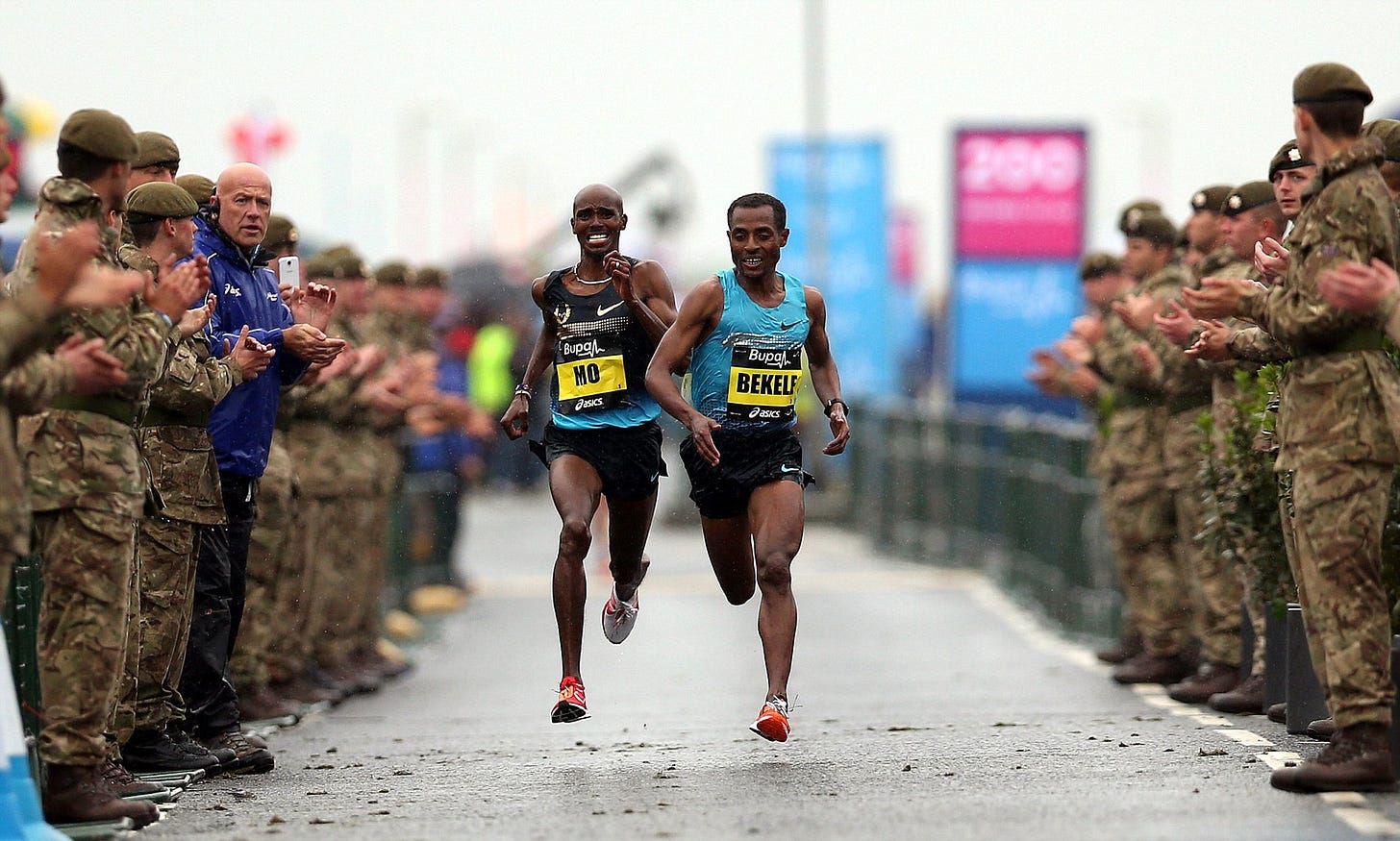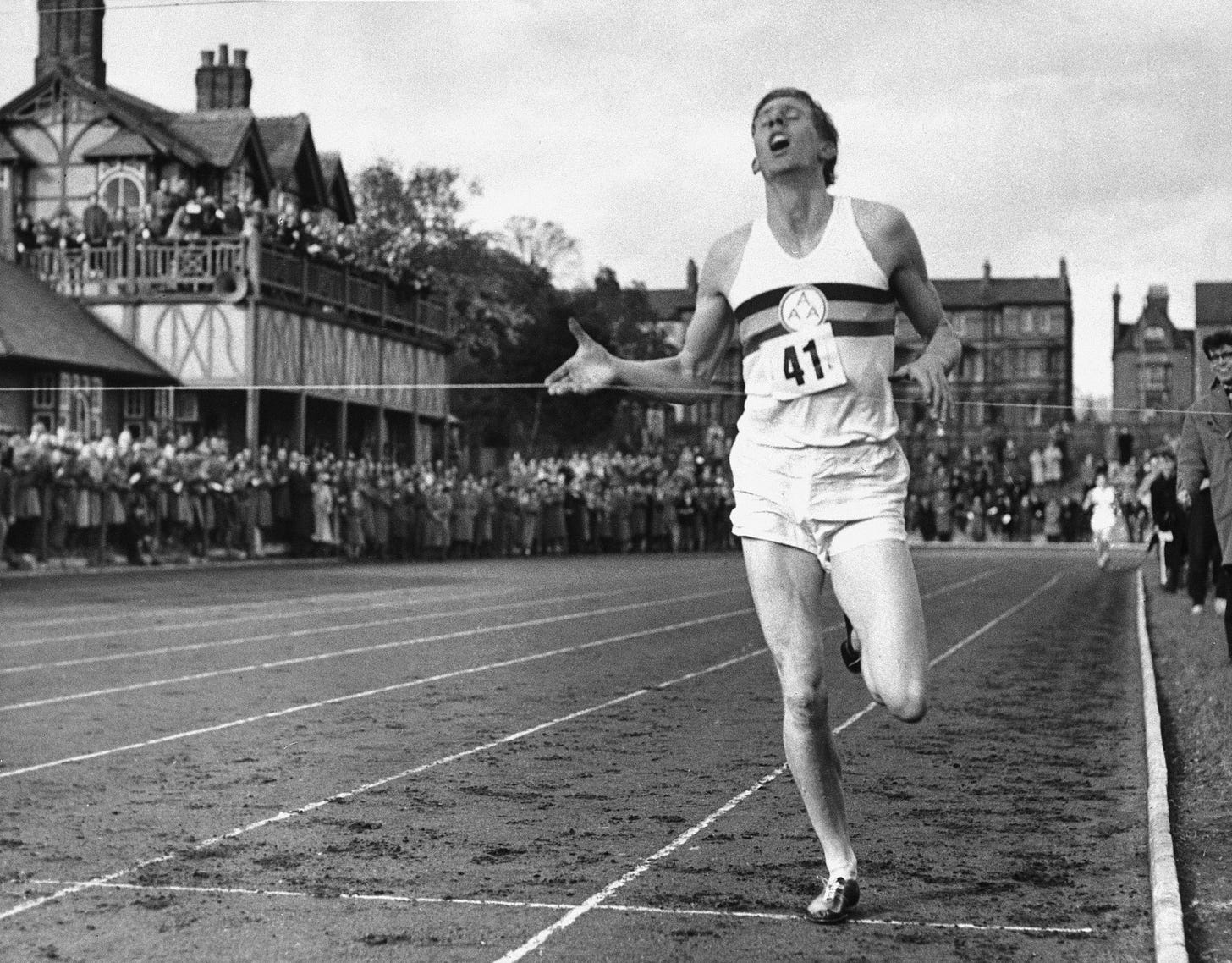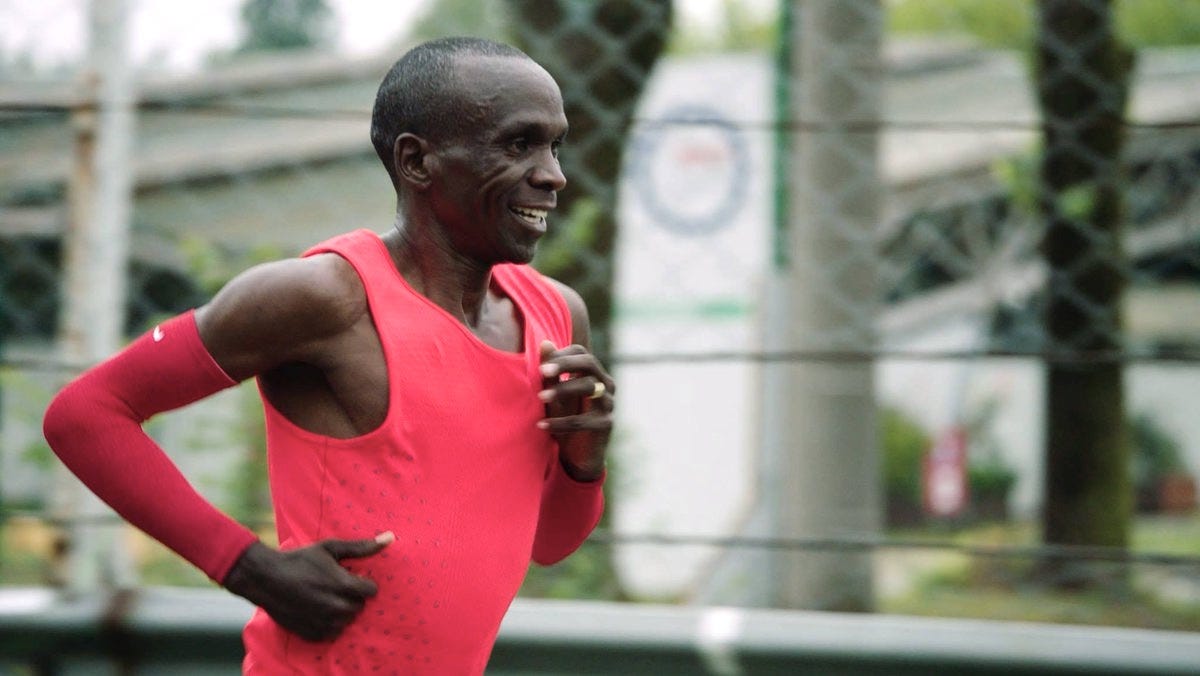January Newsletter | The Power of Belief
My key takeaways from Endure, plus updates for the month of January.
No human is limited.
Four simple words spoken by a man with grit that is out of this world. In the sporting world where limits are so clearly defined, he challenges this widely-held assumption.
I never quite internalised this mantra, because subconsciously I might have been scoffing at such an absurd idea. That’s changing now, though, as I’ve begun to appreciate such simple yet profound wisdom that Eliud Kipchoge brings to this world. Through elaborating on these concepts learnt from sports, I hope to inspire everyone to make a change in your personal lives too.
Over the past month, I have been reading Endure by Alex Hutchinson. Being an endurance athlete myself, I was really curious about how far I could stretch my own limits and whether they were as flexible as Hutchinson claimed.
The Herd Effect / Mentality 🧠
Hutchinson starts off the book with the oft-cited example of Roger Bannister breaking the 4 minute mile, an achievement once considered to be impossible. What’s more surprising is that more than 300 athletes broke this barrier a year after Bannister accomplished this feat. To date, over 1580 athletes have broken the 4 minute mile. In my opinion, it was a mental barrier that Bannister knocked down, providing athletes with the knowledge that it was indeed possible to achieve such a time. In other words, it was believing and having the notion that “since someone was capable of achieving this time, I could too”.
Pain 🤕
If we could remove all pain, that would be the best, wouldn’t it? There were also several nuggets of wisdom in Endure that showed that the regulation of pain and subsequent belief was still necessary for optimal performance. It turns out that humans do have hard limits where muscles are simply incapable (due to biological factors) of contracting any more. As Hutchinson revealed in his book, in 2009, researcher Markus Amann conducted a series of experiments to investigate what happens when cyclists can’t feel pain at all. They unfortunately were unable to pace themselves well and despite feeling great throughout, their legs simply were not responding to their mind’s urging to go faster. Therefore, there is a hard limit imposed.

However, the decision to drop out or not finish a race is made up and decided in our minds long before our bodies fail to carry us further, as outlined in Chapter 4 of Endure. The truth is that very few of us are willing to push ourselves to the limits of our pain threshold every time we step out on the track to run a time trial, simply because experiencing the pain is a scary process in itself. Yet we are unable to accept our failure if we fail to perform to our expectations. As a line in Grits’ hit song My Life Be Like goes “[Are we stuck in] the bliss between giving my all and giving up?”
Belief 😌
That’s where belief and intention come in. I have to make a conscious decision to override my brain’s protective security protocols to such an extent that I can take my performance to the next level. Is it really that simple as merely believing? In my opinion, I believe that it is. Hutchinson detailed that physiologists Shona Halson and David Martin argued that the boundary between ‘real’ performance-enhancing aid and ‘fake’ belief effects is “much fuzzier in the real world.” In a study conducted comparing the potential effects of a ‘miracle recovery oil’ (which was in fact Cetaphil body wash, which had no known properties of helping muscle to recover) and the good old ice bath, athletes who believed and bought the idea that the recovery oil was indeed going to help their performance saw an actual increase in performance in a physical test two days after the study was conducted. This shows that complete belief is the only prerequisite to believing whether something works. Tim Noakes therefore sums it up nicely, “You have to teach athletes, somewhere in their careers, that they can do more than they think they can.”
That is why Eliud Kipchoge has been a role model for me since the days that I was in cross-country, and even now as I shift my focus to pursuing other activities like diving deep into AI. With quotes like “I’m someone who doesn’t believe in limits” and “The way you think about pain is the way your life will be”, he’s so much more than just a runner. He’s a philosopher inspiring belief in people’s minds.
Following his attempt at sub-2 hours in the marathon right from the first failure in Monza, Italy to the day of triumph in Vienna, Austria, where he ran 1.59.40, and finally to his first ever defeat in the marathon distance in the 2020 London Marathon, I draw unparalleled inspiration and grit just by seeing him push through with his characteristic grimace/ smile when he is hurting.
I don’t believe that these lessons are only limited to sports. The power of belief can be applied and unlocked in different areas too. Tying it back to my own life, I can now ask myself, if so many teenagers are making such huge impacts in the world, why can’t I be like them? If 13 to 17 year olds are making an impact through specific knowledge in fields like AI, why can’t I? It’s a matter of self-belief and confidence, and breaking down my own self-imposed limits in my mind.
Updates 🗓️
I’m currently still working on the intersection between healthcare and AI. Over the past month, I worked on predicting medical specialties by looking at medical transcripts. I utilise the ULMFiT technique to achieve accuracy of 62% (that is, based on the medical transcript that is fed into the model, it would predict the right medical specialty 62% of the time). Over the next month, I’ll be looking forward to further exploring various intersections of machine learning with other fields, such as quantum machine learning in a hackathon.
I’ve also signed up for Nightingale OS, an organisation that aims to provide high quality medical datasets to researchers. If all goes smoothly, I hope to utilise their datasets to train better models in the next few months, hoping to solve pertinent medical problems with this data.
School has started again for us here in Singapore! As I enter into my last year of Junior College (High School Senior equivalent), I’m faced with the daunting task of sitting for my GCE A Levels this year. This involves studying hard and smart this year through consistent effort. Something that I’m trying to do would be to practise Anki daily, on any subject. Managing these extracurricular pursuits are going to be tough, but I’ll take the managing of time as a challenge.
Thanks for taking the time to read through this relatively long email. If you feel that anything in this newsletter resonated with you, please do contact me here, if you do not already have my contact :).






